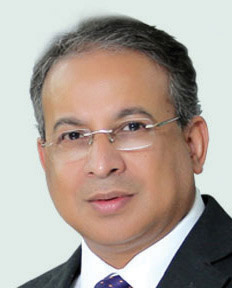 The biggest concern in relying on renewables is the infirm nature of this power resource. The country’s electric grid has so far been able to tackle this intermittency as the penetration of renewable energy has been low. However, the increasing share of renewables is making the use of energy storage systems inevitable. These systems can not only serve as a power backup, but can also facilitate better grid management while helping improve grid power quality. At a recent industry meet, Praveer Sinha, chief executive officer and managing director, Tata Power, spoke about the challenges plaguing the power sector and the benefits of energy storage in addressing these issues. Excerpts from his address…
The biggest concern in relying on renewables is the infirm nature of this power resource. The country’s electric grid has so far been able to tackle this intermittency as the penetration of renewable energy has been low. However, the increasing share of renewables is making the use of energy storage systems inevitable. These systems can not only serve as a power backup, but can also facilitate better grid management while helping improve grid power quality. At a recent industry meet, Praveer Sinha, chief executive officer and managing director, Tata Power, spoke about the challenges plaguing the power sector and the benefits of energy storage in addressing these issues. Excerpts from his address…
A lot of transition has been happening in the power sector globally as well as in India, and all these changes need to be accounted for in order to assess the importance of energy storage. There are three key changes that are taking place at present. The first is the tremendous capacity addition in the renewable energy space. During 2017-18, solar capacity additions crossed the 100 GW mark globally. A total of 104 GW of solar capacity additions were recorded for the first time globally, to which India contributed 10 GW. This trend, and the momentum generated by it, are likely to continue in the years to come.
The second important trend is the increasing complexity of electric grids. With complicated electronics, varied distributed generation sources and multiple players connecting to the grid, the management of the grid is becoming an arduous task. The industry is expecting a large number of electric vehicles to come in in the near future along with a demand response mechanism and increasing renewable energy penetration. Hence, electric grids need to be resilient to be able to integrate all these changes on a real-time basis.
The third key factor is the global focus on climate change mitigation. Whether we like it or not, climate change is a reality and it is crucial to take measures to address this issue. Going forward, there will be a huge pressure worldwide to reduce conventional power generation. Hence, we will have to shut down our old and inefficient plants in the years to come, and this is going to be a tremendous challenge.
Energy storage will play a pivotal role in addressing the issues plaguing the power sector. Energy storage can help address upcoming issues in the power sector. There are various types of energy storage solutions available in the market today, ranging from thermal storage and mechanical storage to electrochemical storage. A lot of research has been carried out worldwide in the field of energy storage, especially in the last 10 years. Experts and scientists are working on innovations to bring down the cost of energy storage solutions to more economically feasible and scalable levels.
While not many positive results have emerged in the majority of the areas, significant reductions in costs and innovations in technology have been achieved in the electro-chemical energy storage domain. Batteries with different chemistries are being manufactured and tested globally, ranging from simple lead acid batteries to advanced lead acid batteries with capacitors, lithium-ion batteries and its various types, and redox batteries. Hence, a lot of activity is taking place in the electrochemical energy storage domain to assess the different conditions that affect the charging and discharging of these batteries. These tests are necessary to ascertain the life of the battery and the number of charge-discharge cycles it can endure. This is one area where significant advancements have been made.
In addition, the cost of batteries has come down. However, in the Indian context, the industry expects this cost to come down even further as in the case of solar photovoltaic (PV). In the solar segment, the cost of solar PV components is declining significantly, leading to an increase in solar PV penetration in the grid, and the Indian industry is expecting the same in the energy storage domain. It is well known that renewable energy can be made sustainable, or intermittent generation can be made almost continuous, through the use of energy storage systems. Hence, the cost of these systems has to come down for adoption on a large scale. Also, scalable solutions have to be designed for integrating renewable energy with energy storage, with energy storage and demand response, and with energy storage, demand response and electric vehicles.
There is a lot of opportunity in the energy storage space, and significant efforts are required not only from scientists, technology providers and entrepreneurs but also from the people actually using these storage solutions. Industry players need to be willing to demonstrate new technologies and their various applications so as to promote uptake. For instance, Tata Power, as a utility, started working on some of these technologies at a nascent stage. It was the first utility in the country to adopt a demand response mechanism. It used energy storage solutions at its load end to meet its peak energy requirements through effective management of the available renewable energy generation and energy storage capacity. Going forward, this can be replicated in many other parts of the country.
In its power quality assessments, Tata Power found frequent instances of reactive power and harmonic disturbances in power supply. The company decided to use energy storage solutions to address this issue of power quality. It was found to be an effective way to not only deal with reliability concerns in power networks but also to conserve the life of the related equipment. Tata Power has been advocating the necessity of energy storage with the power regulators. Regulators, who were initially only concerned about frequency regulation, are now also focusing on the ancillary services markets that can cater to projections for both frequency and load. Going forward, we can expect relevant policies and regulations for addressing these issues.
Energy storage can never be considered in isolation, as it needs a source that generates the energy it stores, which can then be supplied as and when required. However, its application is so phenomenal that energy storage can be used to create a virtual power plant at the load centre so as to make a consumer self-sufficient. It is the consumers who are setting up rooftop solar systems on their premises and integrating them with the grid. Can such a consumer store surplus solar energy at an effective cost and use it as and when required? Can such consumers insulate themselves from a discom and become their own shock absorber in terms of peak and off-peak time grid tariff adjustments?
In Tata Power’s endeavour to encourage energy storage solutions, the company always considers the multiple benefits offered by these systems. Due to its many advantages, energy storage presents an ideal business opportunity for the entire industry. Interestingly, in the past 10 years, the energy storage market, especially the battery market, has witnessed an average growth of 25 per cent year on year. The next 10 years are also expected to witness a similar growth curve, with 20-25 per cent growth predicted each year. Hence, the market potential is huge for energy storage systems, especially with the increased focus on electric vehicles, renewable energy grid integration and the vast opportunities in deploying microgrids in villages. The industry needs to work together to devise cost-effective solutions for utilising energy storage systems to address the likely challenges in the power sector, for both urban as well as rural areas.



